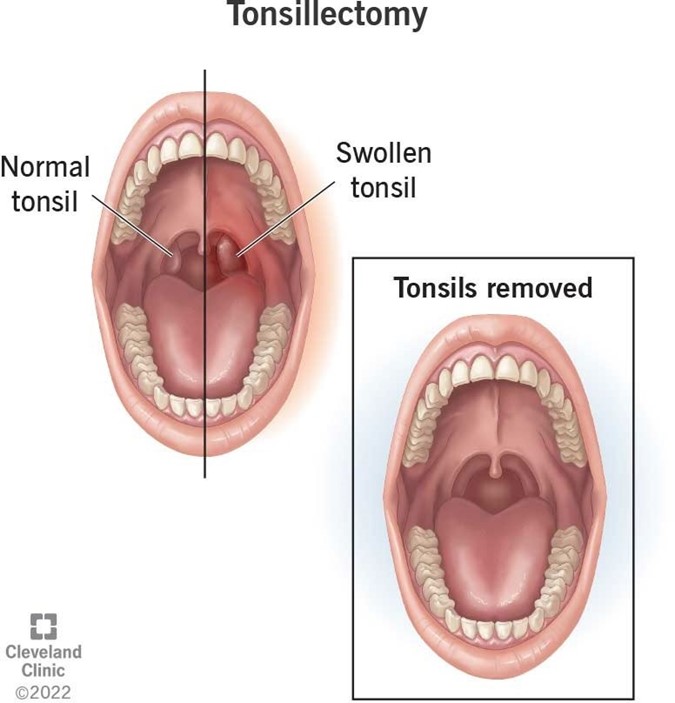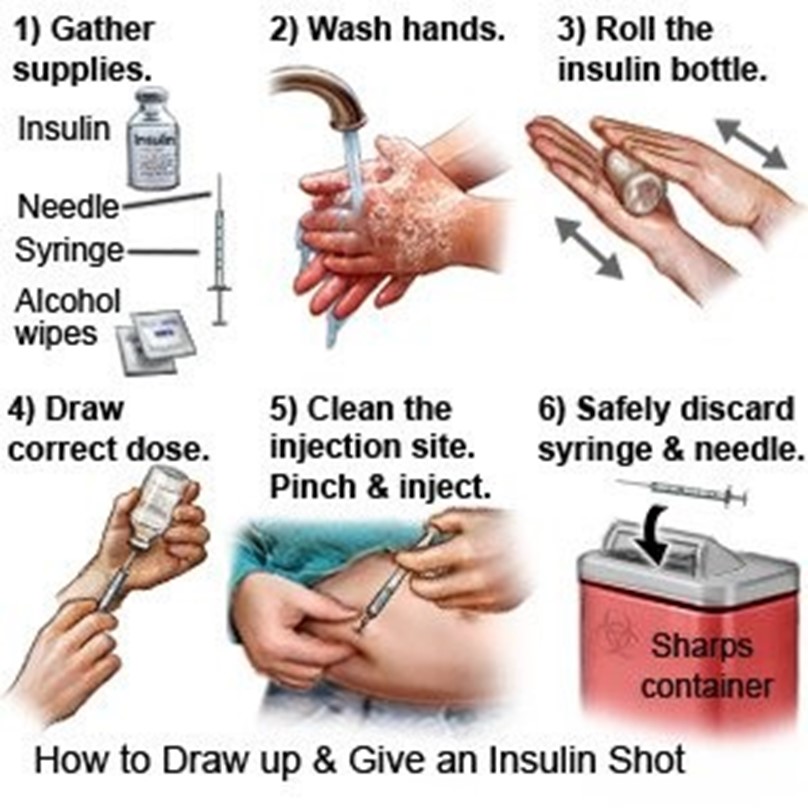A nurse is caring for a child who is 2 hours postoperative following a tonsillectomy. Which of the following fluid items should the nurse offer the child at this time?
Cranberry juice
Crushed ice
Orange juice
Strawberry milkshake
The Correct Answer is B
Choice A: Cranberry juice is not a suitable fluid item to offer the child at this time, as it is acidic and can irritate the throat and cause pain or bleeding. Cranberry juice can also stain the surgical site and make it difficult to assess for signs of hemorrhage.
Choice B: Crushed ice is a suitable fluid item to offer the child at this time, as it is cold and can soothe the throat and
reduce swelling or inflammation. Crushed ice can also hydrate the child and prevent dehydration.
Choice C: Orange juice is not a suitable fluid item to offer the child at this time, as it is acidic and can irritate the throat and cause pain or bleeding. Orange juice can also interfere with the clotting process and increase the risk of hemorrhage.
Choice D: A strawberry milkshake is not a suitable fluid item to offer the child at this time, as it contains dairy products and can increase mucus production and cause coughing or gagging. A strawberry milkshake can also stain the surgical site and make it difficult to assess for signs of hemorrhage.

Nursing Test Bank
Naxlex Comprehensive Predictor Exams
Related Questions
Correct Answer is A
Explanation
Choice A reason: This choice is correct because examining the child's tympanic membrane at the end of the physical examination is the best strategy to avoid upsetting or frightening the child. The tympanic membrane is the thin membrane that separates the outer ear from the middle ear, and it can be examined by using an otoscope, which is a device that has a light and a magnifying lens. Examining the tympanic membrane may be uncomfortable or painful for the child, especially if they have an ear infection or inflammation. Therefore, performing this procedure at the end of the examination can help to minimize the child's distress and resistance.
Choice B reason: This choice is incorrect because examining the child's tympanic membrane before auscultating the chest and abdomen is not a good strategy to avoid upsetting or frightening the child. Auscultating the chest and abdomen is a procedure that involves listening to the sounds of the heart, lungs, and bowel by using a stethoscope, which is a device that has a chest piece and earpieces. Auscultating the chest and abdomen may be soothing or relaxing for the child, as it does not cause any discomfort or pain. Therefore, performing this procedure before examining the tympanic membrane can help to calm and distract the child.
Choice C reason: This choice is incorrect because examining the child's tympanic membrane at the beginning of the physical examination is not a good strategy to avoid upsetting or frightening the child. Examining the tympanic membrane at the beginning of the examination may cause anxiety or fear in the child, which can affect their cooperation and trust for the rest of the examination. Therefore, performing this procedure at the beginning of the examination can increase the child's distress and resistance.
Choice D reason: This choice is incorrect because examining the child's tympanic membrane before examining the
head and neck is not a good strategy to avoid upsetting or frightening the child. Examining the head and neck is a procedure that involves inspecting and palpating the scalp, hair, face, eyes, ears, nose, mouth, throat, lymph nodes, and thyroid gland. Examining the head and neck may be easy or pleasant for the child, as it does not cause any discomfort or pain. Therefore, performing this procedure before examining the tympanic membrane can help to establish rapport and confidence with the child.
Correct Answer is C
Explanation
Choice A: This statement does not indicate a need for further teaching, as it is correct that insulin can be injected anywhere there is adipose tissue. Adipose tissue is the layer of fat under the skin that can absorb insulin and prevent damage to muscles or organs. The common sites for insulin injection are the abdomen, thighs, buttocks, or upper arms.
Choice B: This statement does not indicate a need for further teaching, as it is correct that the child should rotate sites after 5 injections in one area. Rotating sites can prevent lipodystrophy, which is a condition that causes abnormal changes in fat tissue due to repeated injections. Lipodystrophy can affect the appearance and absorption of insulin in the affected area.
Choice C: This statement indicates a need for further teaching, as it is incorrect that the child should aspirate before injecting the insulin. Aspiration is the process of pulling back on the plunger of the syringe to check for blood before injecting the medication. Aspiration is not recommended for insulin injection, as it can cause pain, bruising, or leakage of insulin from the injection site.
Choice D: This statement does not indicate a need for further teaching, as it is correct that insulin should be injected at a 90-degree angle. Injecting insulin at a 90-degree angle can ensure that the medication reaches the adipose tissue and prevents skin irritation or muscle damage. The only exception is if the child has very thin skin or uses very short needles, in which case they may inject at a 45-degree angle.

Whether you are a student looking to ace your exams or a practicing nurse seeking to enhance your expertise , our nursing education contents will empower you with the confidence and competence to make a difference in the lives of patients and become a respected leader in the healthcare field.
Visit Naxlex, invest in your future and unlock endless possibilities with our unparalleled nursing education contents today
Report Wrong Answer on the Current Question
Do you disagree with the answer? If yes, what is your expected answer? Explain.
Kindly be descriptive with the issue you are facing.
